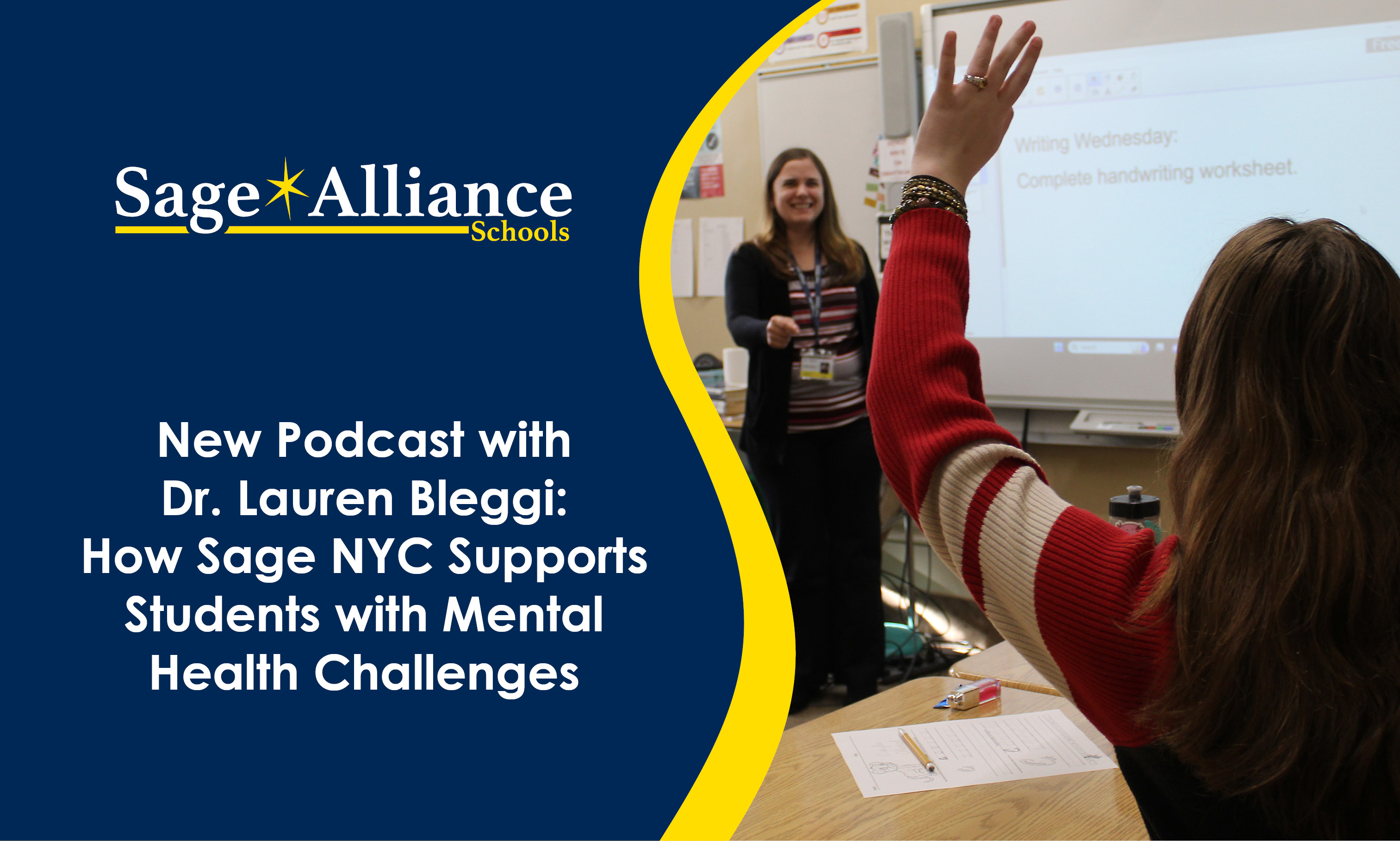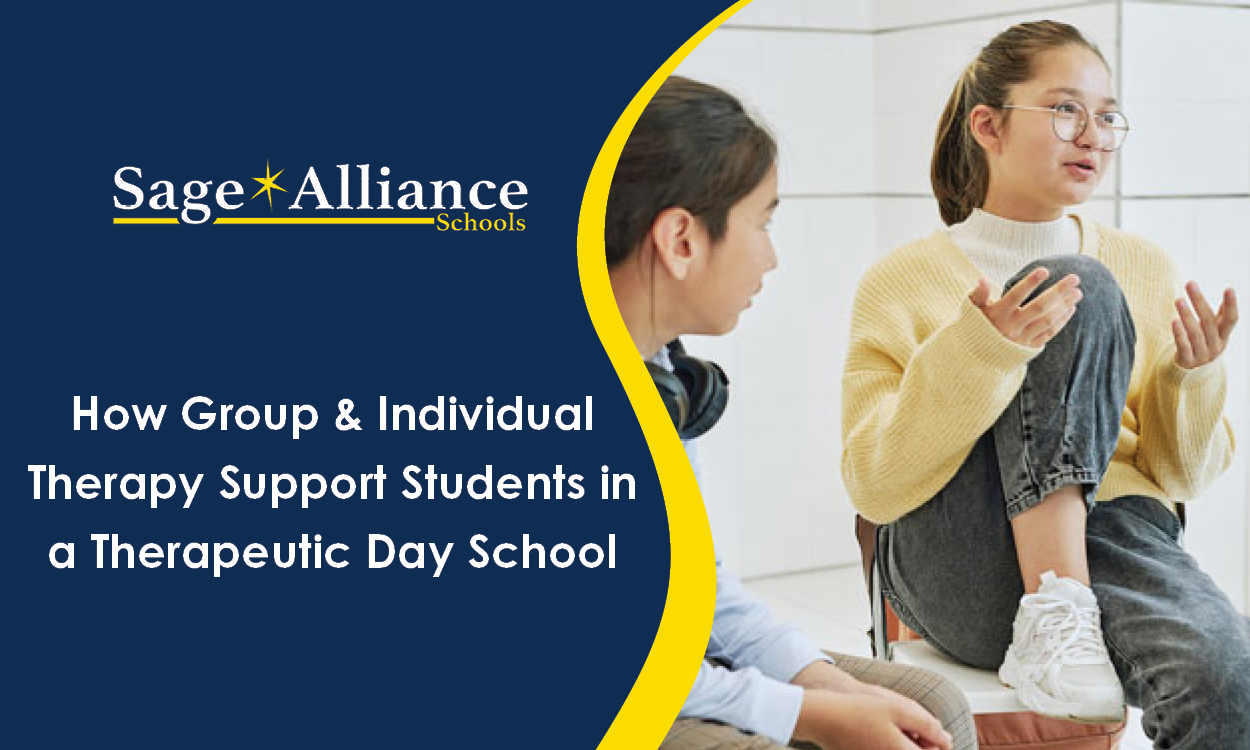Successful Transition From Therapeutic School to Public School
Posted: October 03, 2014 | Written By: Holly Ference | Category:

Sage Day Schools offer a smaller, therapeutic environment for students who are not thriving in a larger public school due to a variety of emotional issues. Our goal is to help our students achieve a healthy level of academic success and emotional healing so they can smoothly transition back to mainstream educational programs and/or the workforce. Given the proper preparation and support, a significant number of our students can successfully return to their home school districts. Although many of our students may be apprehensive about change, providing the right supports helps them recognize that they can succeed in spite of their fears or concerns. Here is an overview of how we support each student through the transition from Sage Day Schools back to the public school.
We ensure that the student is in fact ready for transition.
In order to demonstrate readiness for transition to the mainstream setting, a student should exhibit the following indicators over a period of at least six months:
-
Stronger connection to the school community as evidenced by participation in school activities. Peer interaction should be at a level necessary to engage in the collaborative work expected of students in mainstream settings and/or the workforce. Successful participation in at least one activity or class in the mainstream district is an even stronger indicator of readiness.
-
Maintenance of grades that are in line with the student’s ability and engagement in the learning process as evidenced by consistent use of effective study habits.
-
No incidence of hospitalizations, self-injury or other maladaptive symptoms of the underlying emotional issues that led to the need for out-of-district placement.
-
Active involvement in counseling (private or through the school) to help with the transition and other developmental issues.
-
Successful interaction with the community outside Sage Day via employment, participation in a club, team or other sustained activity.
Sometimes a student will request a transition before he or she has demonstrated a sufficient number of these indicators. In this case, we first help the student recognize the need to demonstrate the indicator. Then we support the student in setting and pursuing the goal of achieving the indicator.
We prepare the student and family by engaging them in sustained dialogue about the transition.
We talk at great length with the transitioning student and his or her family about the upcoming return to their home district. Although we cannot prepare the student for everything that might come up, discussing, recognizing and reframing fears and concerns in advance helps the student feel more at ease with the upcoming change. We remind the
transitioning student of their successes and accomplishments and help him or her recognize the confidence he or she has developed as a result. We also do not overlook what the student may still need to work on. For example, the shy student may continue to experience difficulty with peer interaction. However, we can help this student recognize and utilize coping skills to maximize his or her success in working with peers.
We establish a formal transition plan and schedule.
Once the student has maintained the solid performance indicators outlined above, we collaborate with the student, parents and school district to set up a formal transition plan. This may include a period of time during which the student spends part of each school day at Sage Day and part of the day in his or her public school to support the student in re-acclimating.
We engage in sustained communication with the student, family and school district.
Our educators, clinicians, and administrators all know how important communication is to the success of our students’ daily school life. Accordingly:
-
We maintain an ongoing dialogue with our students and their parents about each student’s progress. This occurs formally and informally via discussions with teachers, individual, group and family therapies, progress reports, report cards and parent-teacher conferences.
-
We work with district administrators and their staffs to maintain open lines of communication between students, their families, and the schools so that returning students feel more at ease in their home districts.
-
We provide the districts with updated information about each student’s challenges and progress through quarterly summaries; these summaries cover the students’ overall social and emotional functioning as well as report cards that focus on academic performance.
We encourage the student to get involved at his or her district school.
Students who get involved with activities at their district school develop a stronger connection and relationship to their school. A student can enjoy even greater comfort and confidence when he or she pursues an activity in-district (e.g., art, music, community service, etc.) that he or she has enjoyed at Sage Day Schools.
We help establish a supportive in-district atmosphere.
The most important aspect of making an easy transition to a district school is to give students ample opportunity to express their feelings and thoughts—just as they have at Sage Day Schools.
-
We work with school administrators and school psychologists to develop an atmosphere in which students feel empowered to address their concerns in the moment, rather than allowing these concerns to become obstacles to progress.
-
In addition, we work with the student’s child study team to discuss the areas in which the student will need continued support upon return to the sending district.
-
Our embedded therapeutic services are available in many New Jersey school districts; these services provide a supportive bridge between the therapeutic environment students had at our Sage Day Schools and their lives back at public school.
We support parents through the transition.
Sometimes the parent of the transitioning student may feel his or her own anxiety about the student’s transition back to public school. At other times, the parent may want the student to transition before the student is ready. In either case, it is important to listen to the parent and engage him or her in the process.
At Sage Day Schools, we are committed to making the transition from a therapeutic school back to public school as smooth as possible for students and their families. This is a key component of our commitment to getting our students ready for the challenges they will face during life after Sage Day.
Want to be notified of new articles and resources from Sage Alliance? Click here to submit your email and opt into our newsletter.









